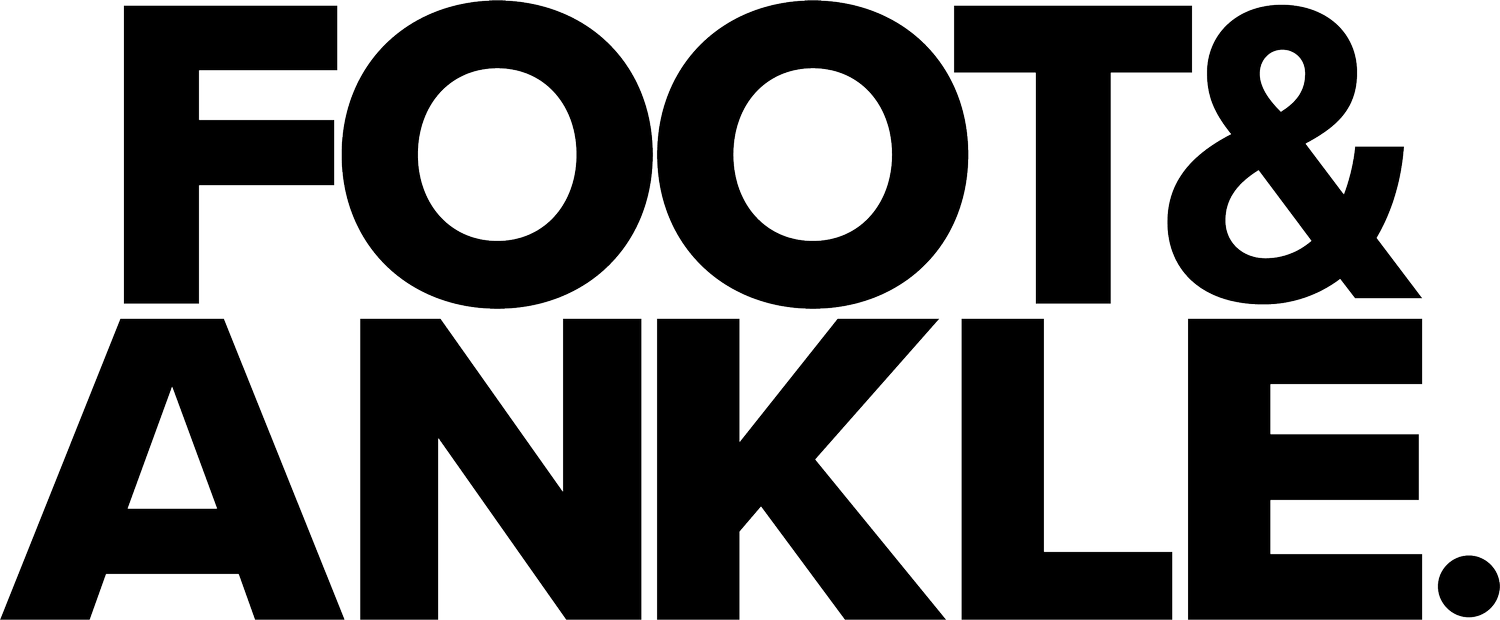How we treat heel pain. Part two.
Here is a quick recap from Part 1 of Plantar Fasciopathy blog.
Plantar Fasciopathy (commonly known as Plantar Fasciitis) is a condition that presents with pain under or around the heel. It is one of the most common causes of pain around the foot, and this blog is here to unpack the diagnosis, causes and treatment of Plantar Fasciopathy.
Note! Plantar Fasciopathy is commonly known as Plantar Fasciitis. These are interchange terms for the same condition. Historic literature has suggested an inflammatory element to the condition, whilst newer research has indicated there is not the inflammatory process as previously thought. As such, for the remainder of the blog, I will be referring to this troublesome condition as Plantar Fasciopathy.
What is Plantar Fasciopathy?
Plantar Fasciopathy is pain that originates from the Plantar Fascia. The Plantar Fascia is a tendon-like structure that inserts into the calcaneus (heel bone) and attaches into the base of the toes. The Plantar Fascia exhibits elastic properties which allows it to aid in shock absorption, energy storage and return of energy. The Plantar Fascia acts in a very similar fashion to the Achilles Tendon.
How do we treat Plantar Fasciopathy?
There is a wide range of available treatments to improve Plantar Fasciopathy pain. It is important to build a recovery plan that best suits you and your needs. If you’d like to treat your Plantar Fasciopathy, click below to book in with one of our practitioners
We’ve broken the treatment of Plantar Fasciopathy into the following three phases:
PHASE 1
Manage pain / symptoms
Improving acute pain and symptoms is the first phase of rehabilitating from painful Plantar Fasciopathy.
This can be achieved in a variety of ways, but the focus should be on the following:
Reducing aggravating load: This will be entirely individual but it is based on your exercise history. It may include reducing running or walking volume, reducing jumping or hopping activities, or reducing standing time on feet. It’s important to remember that this doesn’t mean you have to stop! We would always try and recommend a continuation of what you love doing, or a variation that can keep you exercising.
Taping: This has been shown to be effective in the management of Plantar Fasciopathy, and is something that can be easily reproduced at home if found effective (1).
Footwear modification: Depending on your presentation of Plantar Fasciopathy, altering footwear can be helpful. It is important to remember that it is a combination of footwear factors that can influence symptoms. Work shoes are just as (if not more) important than exercise and casual shoes. A question we commonly ask clients is - ‘what shoes do you spend the most time in?’ If you’re spending most of your time in your work shoes, then assessing these for wear and appropriateness, is important.
Rehabilitation exercises: It is safe and helpful to begin rehabilitation exercises (we have an example program below).
Heat or ice: There is a long standing history of using ice/cold therapy for Plantar Fasciopathy. But, we LOVE heat. The plantar fascia has a really poor blood supply, which may impact on its ability to repair. Heat can increase vascularity (blood flow), and impact on healing. Plus, it feels great!
Understand your diagnosis
The recovery path isn’t always smooth
We hope these blogs are doing the trick for your understanding of Plantar Fasciopathy. But, it is important to know that ‘flares’ in pain will occur.
What is a flare?
A flare is how we like to describe an increase in symptoms. The likelihood of multiple flares occurring during your recovery is high. It’s easy to get discouraged by this. But it’s important to ‘zoom out’ and remember how far you’ve come.
Flares can occur due to changes in circumstances such as sleep, stress levels or nutrition changes.
Flares might also occur for the following reasons:
Increase in loading levels (higher time spent on feet, increased walking / running volume)
Returning to pre-injury activity levels
Changes to rehabilitation program
But, flares don’t always need to have an explanation. Knowing that you’re on the gradual path to improvement is extremely helpful. Recovery will likely look something like this:
Phase 2
What exercises can be done for Plantar Fasciopathy? (Increase load and improve capacity. )
Given that symptoms have begun to improve, the focus is on increasing the capacity of Plantar Fascia, and the surrounding muscles. We do this by introducing load. We have a great blog on load versus capacity, you can read that here. Introducing load with rehabilitation exercises can occur quite early and give positive improvement.
There’s a few key areas to focus on with exercise rehabilitation:
Balance and stability
Foot and calf muscle strengthening
Plantar Fascia Loading
Plyometric Progression (if required)
Everyone’s exercise prescription is different, depending on symptoms and current capabilities. An example of an early stage rehabilitation program we recommended previously is below:
Week 1 - 2
Single leg standing balance: 5 sets of 10-15 seconds, 2x daily
Ankle circles (Controlled Articular Rotations) 3 sets of 5 in each direction
Single leg calf raise hold: 5 sets of 45 seconds, body weight
Walking up to 10 minutes, 2x daily
Daily foot taping
Week 3 - 6
Single leg standing weight swaps: 3 sets of 10 starting with 1kg, 2x daily
Alternating days of the following: Single leg calf raise hold: 5 sets of 45 seconds introducing weight (such as a kettlebells), double calf raise up with single leg lower, 3 sets of 8, increasing by 2 each week
Walking up to 20 minutes, 1x daily
Please note! This program is not for everyone, please consult with a medical professional if you have pain.
Does shockwave help Plantar Fasciopathy?
Shockwave: Shockwave or (EWST) is a form of treatment that can aid in returning the Plantar Fascia to normal function. It involves high numbers of contacts between the machine tip and the sore Plantar Fascia. It allows for inflammation and remodelling to occur at a cellular level. There is also good evidence to suggest it has a positive impact on pain. Shockwave can be a painful treatment, but the overload of pain to the area can have a analgesic impact.
If you’d like to learn more about Shockwave, you can do so here.
Do orthotics help Plantar Fasciopathy?
Orthotics: Orthotics are a great tool to manage the loading of the Plantar Fascia. It is important to note that:
Orthotics are part of the recovery plan, not the whole plan.
The implementation of orthotics can be utilised depending on a numbers of factors including:
Time until upcoming goal
Load on feet (ie steps per day / training or hours of standing per day)
Symptom severity
Foot and ankle strength and control
Client personal preferences towards treatment plan
At Foot & Ankle, we can appreciate the uses of an orthotic, but they are certainly not the only option we offer. They are part of the plan.
What sorts of injections help Plantar Fasciopathy?
Injections: Injections have been commonly used for Plantar Fasciopathy. They can be utilised effectively if symptom persistence and severity is not progressing as per expected. There are two common types of injections for Plantar Fasciopathy:
Corticosteroid: The most commonly utilised injection for Plantar Fasciopathy is a Corticosteroid Injection. Steroid is a potent and effective anti-inflammatory that can aid in short-term symptom improvement.
Platelet Rich Plasma (PRP): PRP is a blood product that consists of high levels of platelets. Platelets are thought to be important in the process of healing injured tissue. The process involves drawing a client’s own blood, separating the plasma, and re-injecting into the injured tissue.
More research needs to be completed to investigate the effectiveness of both corticosteroids and PRP injections, but we tend to think of them as adjunct treatments. That is, it needs to be combined with progressed strengthening, load management, footwear modification and appropriate education, before injections are considered.
Manual therapy (Dry Needling, Mobilisation, Massage)
Ankle range of motion and calf strength appears to have correlation with Plantar Fasciopathy. Dry needling, ankle/foot joint mobilisation and massage, can be utilised as adjunct treatments to aid in range of motion improvement. It is quite common to feel calf soreness following calf strengthening, if you feel like manual therapy may improve your recovery, we can help!
Phase 3
Return to activity or sport
Phase 3 may involve returning to full walking or running volume, or returning to training sessions or game play. This phase will generally begin once symptoms are stable and consistent. It is important to remember that this is the introduction of the highest amount of load, and having enough recovery between sessions is vital.
There may be a slight flare in symptoms with a return to activity or sport but Plantar Fasciopathy does respond to increases in load. Although this may induce some level of discomfort, it is expected, and it will adapt and continue to improve with appropriate load management and capacity improvement.
Plantar Fasciopathy is the most common presentation the Podiatrists at Foot & Ankle help with! If it is holding you back from doing what you love, we’re here to help!
References
Morrissey D, Cotchett M, Said J'Bari A, et al. Management of plantar heel pain: a best practice guide informed by a systematic review, expert clinical reasoning and patient values. British Journal of Sports Medicine 2021;55:1106-1118.



